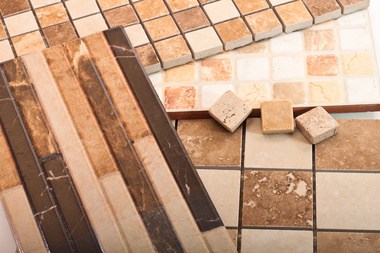If your DIY ambitions have reached epic proportion and you’re ready to
take on painting your home’s exterior solo, weigh the decision carefully
before proceeding. You’ll need to decide if you have the time and
patience to do a detailed and thorough job. If you’re ready, willing and
able, here’s how HGTV recommends going about it:
Step 1: Prep Your Surface
Priming your home’s exterior is essential to a good result. If you’re
painting a new stucco home, let it cure for at least 28 days, otherwise
the paint will not adhere properly. If you’re repainting an existing
home, check for peeling, chipping, mildew, etc. Remove mildew by using a
garden sprayer to apply a chlorine bleach solution, then use a pressure
washer to remove dirt and old paint from the entire exterior.
Step 2: Caulk and Patch
Use caulk to seal any cracks and joints where one type of exterior comes
up against a different type of exterior, such as window frames, door
frames, molding and fascia boards. Patch chips in an older stucco
surface with new stucco - allowing time for it to cure - and replace
wood siding or fascia boards that show any signs of rotting. Gently sand
wood trim and doors to ensure an ideal surface for painting.
Step 3: Prime
Primer is key to a good paint job as it has a high resin content that
locks old paint in place and creates a healthy surface for new paint to
adhere to. If you are repainting walls that have become chalky or dusty,
select a chalky wall sealer. Paint will not stick to a dusty surface.
When dealing with new construction, latex primer works well for vinyl
and most wood siding. Check the label on your primer or sealer to
determine how long to wait before you begin painting.
Step 4: Choose Quality Paint
Opt for a 100-percent acrylic latex paint for your home’s exterior.
Better quality paints are usually higher in volume solids and have
better binders to help hold pigments in place longer, improving the
durability of your paint job. Check the manufacturer's website or ask
your local distributor for a Technical Data Sheet, to determine a
paint’s level of volume solids, but generally speaking, those labeled
"premium" or "super-premium" are higher in volume solids than budget
brands.
Step 5: Choose an Appealing Color
This may seem like an obvious step, but it’s really the most important
one - not to mention potentially overwhelming - so do some research.
Investigate your neighborhood to see what you like on other houses, but
take into consideration the style of your home. Choose a color that
complements your roofing and any brick or stone accents you may have. If
you’re having trouble deciding, paint samples on your home’s exterior
and study how it looks at different parts of the day. And keep in mind
that vibrant colors will fade faster.
Step 6: Time to Paint
The ideal way to paint exterior walls is called spraying and
back-rolling. This method requires two people, one to apply paint with a
sprayer, another to follow behind with a roller. This delivers an even
finish, particularly on textured surfaces like stucco. If your budget
allows, apply a second coat after the recommended dry time. Muted colors
cover better than bright ones, which may require a second coat to get
the full color.
Step 7: The Details
The last step is to paint the doors, fascia, molding, shutters and other
decorative details. Use a good brush or 6-inch "hot dog" rollers.
Remember, there are no short cuts, so be prepared to invest the
necessary time. And it will be worth it - a quality paint job can last
10 years in the right climate.
Source: HGTV.com
 The
darker the blue, the stronger the demand for homes is in that area. The
survey shows that in 3 of the 50 U.S. states, buyer demand is now very
strong; only 2 of the 50 states have a ‘weak’ demand. Overall, buyer
demand is slightly lower than this time last year but remains strong.
The
darker the blue, the stronger the demand for homes is in that area. The
survey shows that in 3 of the 50 U.S. states, buyer demand is now very
strong; only 2 of the 50 states have a ‘weak’ demand. Overall, buyer
demand is slightly lower than this time last year but remains strong. As
the map below shows, 18 states reported ‘weak’ seller traffic, 29
states and Washington, D.C. reported ‘stable’ seller traffic, and 3
states reported ‘strong’ seller traffic. This means there are far fewer
homes on the market than what is needed to satisfy the buyers who are
looking for homes.
As
the map below shows, 18 states reported ‘weak’ seller traffic, 29
states and Washington, D.C. reported ‘stable’ seller traffic, and 3
states reported ‘strong’ seller traffic. This means there are far fewer
homes on the market than what is needed to satisfy the buyers who are
looking for homes.

























